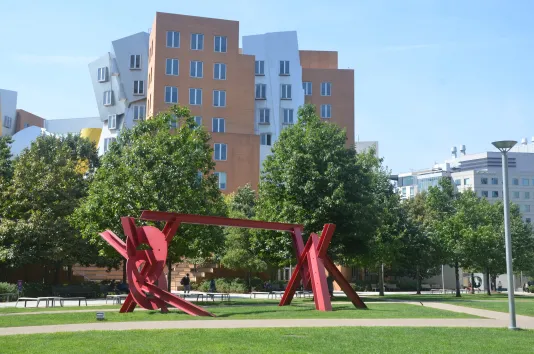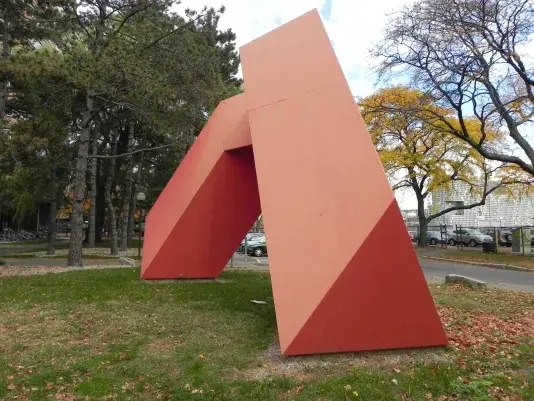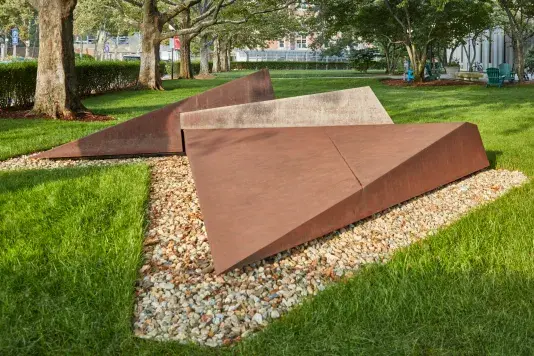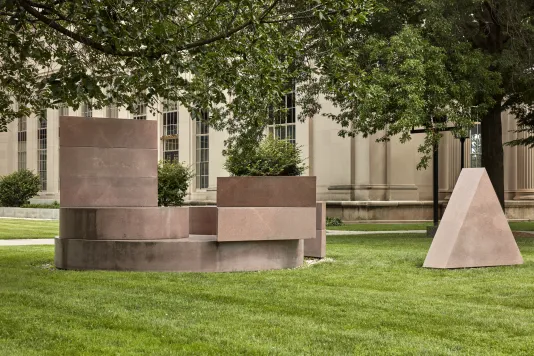Mark di Suvero, Aesop's Fables, II, 2005. Made possible through the generosity of the artist, gifts from Vera G. List and the Family of Robert S. Sanders, MIT ‘64, and by MIT Percent-for-Art Funds for the Northeast Sector Landscape
Public Art Highlights with Curator Christopher Ketcham

Tony Smith’s idiosyncratic geometries
Tony Smith, For Marjorie
Year: 1961 (fabricated 1977)
Medium: Painted Steel
Location: New House

Beverly Pepper’s anti-monolithic forms
Beverly Pepper, Trinity
Year: 1971
Medium: Corten Steel
Location: Between buildings 16 & 26

Michael Heizer’s monument to industrial extraction
Michael Heizer, Guenette
Year: 1977
Medium: Laurentian Pink Granite
Location: Killian Court
